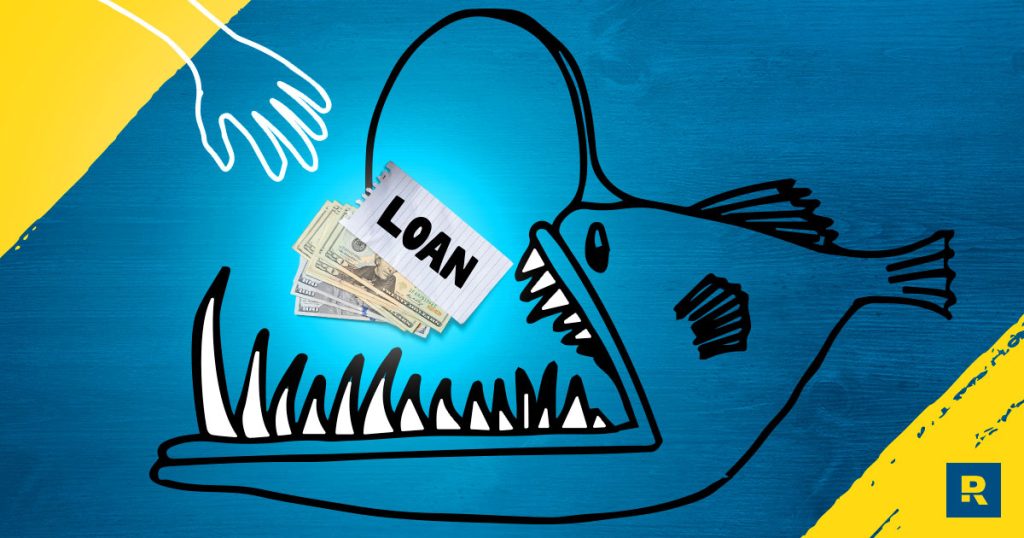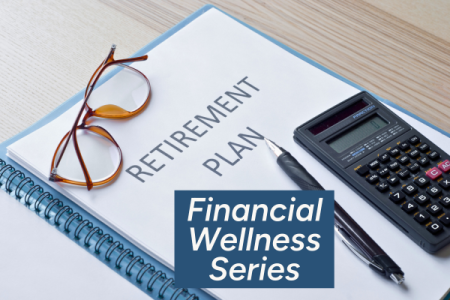We’ve all seen them. Bright yellow and red signs with promises of instant cash to help you get to payday. And all you have to do is sign over your dignity and any leftover hopes of being financially stable in the near future.
Yup—we’re talking about payday lenders. They’re the bottom-feeders of the financial industry. They entice poor souls in desperate situations through their doors with the promise to look the other way when it comes to bad or poor credit scores. But what you actually get is a small payday loan and a pile of hot, steaming, crappy debt.
So what do you do when you’re down on your luck, living paycheck to paycheck, have poor credit, and that squeaky wheel on your car not only falls off but blows up and you don’t have the money to cover it? Where do you turn?
What Are Payday Loans?
Payday loans are loans that help you get from one payday to the next (for those times your paycheck can’t stretch to the end of the month). Sounds nice enough, right? Wrong. Payday loans are a slippery slope into a debt-building cycle that isn’t easy to escape.
In case you didn’t know, payday lenders are the scum of the earth. Think we’re being too harsh? Think again. Let us tell you a little story:
It’s the beginning of the month, Robert just got paid, but he’s already down to his last $100 and his water heater burst. Not only that but he just cleaned out his savings account to pay the light bill. And to top it all off, Robert’s credit is shot, and all of his credit cards are maxed out.
Feeling desperate, Robert drives to his local payday lender, skims the loan contract (right past the astronomical interest rate), and signs his name on the dotted line in exchange for $300. Now he can fix his water heater and just maybe make it to his next payday.
In order for the lender to look past his payment history (or lack thereof) and poor credit score, Robert has to write a check dated for his next payday in the amount he borrowed—plus interest.
But what he doesn’t realize is that by signing up to get cash fast, he just made a gentleman’s agreement with the debt devil. Now he’s in a cycle of taking out payday loans just to cover him until the next payday and the next and the next.
For instance, Robert took out a $300 loan. At a 15% interest rate for a two-week loan period, he racked up $45 in interest. But he couldn’t pay it back in two weeks, so he decided to extend the loan (for another fee of course). So now his $300 loan has turned into $360. And by the next payday, he still can’t pay his bill and decides to get another payday loan to pay off the first, and the cycle goes on two more times. At the end of the cycle, Robert will have only borrowed $300 but paid $105 in interest and fees to the lender. That’s 35% interest—a 912.50% annual interest rate. Yikes.
How Do Payday Loans Work?
Listen up: Payday lenders are the financial industry’s mobsters. They offer up a solution to fix a problem. But right when you think you’re out of the woods, they come knocking—they want their money. The only difference is they don’t have to knock too long.
Pay off debt fast and save more money with Financial Peace University.
You see, when you sign up for a payday loan, you give the lender access to your checking account so they can deduct what they’re owed (plus a fee) on payday—or you have to write them a post-dated check.1 That’s how they know you’re good for the money.
Payday lenders don’t actually care whether you can pay your bills or not. So when payday comes, they get their money, and you can only hope and pray that you’ll have enough left to get you through the end of the month. And unless you decide to leave debt behind for good, payday lenders like to make you believe they’re your only option. That’s how they keep you in the lending cycle.
Types of Payday Loans
Payday lenders come in the form of the brick and mortar on the corner, the app on your phone, and the online quick cash varieties. No matter which one you choose, they all operate with the same mentality when it comes to your credit score: look the other way.
Most often, you can find loans in the form of cash advances, instant online loans (like the Dave app) and “one-hour” loans. Here are the most common types:
- One-Hour Payday Loans
- 24-Hour Payday Loans
- 30-Day Payday Loans
- Instant Online Payday Loans
- Cash/Check Advance Payday Loans
- Military Payday loans
Payday lenders want you to believe that getting money fast is the best course of action . . . especially if you’re in a pinch. Even their marketing tactics use strategies based on “living in the moment.” But as we all know, that can get us in trouble down the road.
Why Are Payday Loans Bad?
Are you feeling queasy yet?
Get this: Payday lenders set up shop in the blue-collar areas of town because they want to target people who are living paycheck to paycheck. They hope to catch someone in the middle of a financial crisis. They rely on credit companies to turn these people away so they can run in and “save the day.”
They look like heroes to those who are low on hope and feeling desperate. Payday lenders usually charge a fee for every $100 they loan to you.2 Oftentimes, this fee is anywhere from $10–30. Let’s say you took out a $200 loan with a fee of $30. That fee is equal to an annual interest rate of 391.07%. But if you can’t pay it back, the lender might slap you with late fees, repayment plans, or offer you a rollover (plus another fee).
There are millions of Americans who walk this same road, feeling like desperate times call for desperate measures. In fact, 37% of Americans said they’d be unable to cover a $400 emergency.3
If you’ve ever been in this position, we get it. Maybe your credit is shot and you know the payday lender will look the other way when it comes to loaning you some fast cash. Or maybe you’ve explored every option you can think of and have nowhere else to turn.
But if you’re reaching desperation and are thinking about visiting your friendly neighborhood payday lender, think again. There’s another way.
How to Avoid Payday Loans
It’s scary when you’re in over your head and the ends just won’t meet. And in these situations, it’s really easy to make a quick decision that you’ll regret for years (and years) to come.
We want to help you try to avoid those nasty payday loans like the plague (or coronavirus). So . . . pause and take a deep breath. It’s going to be okay. Let’s talk through some things that might shine a light on your situation:
1. Take care of your Four Walls first.
Your Four Walls are: food, utilities, shelter and transportation. That means that for now, you can tell those debt collectors to hit the road.
2. Sell anything that isn’t nailed down.
This isn’t the time to keep up those hoarding tendencies. If it’s not nailed down and has even a slight value, sell it!
3. Cut any extra spending.
This is a hard one, but if you want to turn your finances around, you have to get serious here. Don’t even step foot inside of a restaurant unless you’re working there.
4. Don’t go into any more debt.
You might be thinking that’s easier said than done, right? Wrong. Just don’t do it. Cut those credit cards up. Don’t visit the payday lender again, and steer clear of borrowing any more money.
5. Find a side job that will make you some quick money.
The best way to increase your income fast is by getting another job (or two). There are plenty of ways to make money. You just have to roll up your sleeves and get to work. Check out Craigslist, post in your neighborhood Facebook group, or ask a neighbor if they need your handy skills.
6. Make a budget.
Getting on a zero-based budget is key to getting out of debt and getting on the road to financial peace. A budget is on paper, on purpose—every dollar has an assignment before the month begins. EveryDollar is our free online budgeting tool, and you can create a budget in less than 10 minutes and be on your way to a better money month.
7. Get on the Baby Steps.
The 7 Baby Steps are the plan for your money and your life. Not only will they put you on a plan to live and give like no one else but they’ll give you your next step for right now, when you need it the most.
Baby Step 1: Save $1,000 for your starter emergency fund.
Baby Step 2: Pay off all debt (except the house) using the debt snowball.
Baby Step 3: Save 3–6 months of expenses in a fully funded emergency fund.
Baby Step 4: Invest 15% of your household income in retirement.
Baby Step 5: Save for your children’s college fund.
Baby Step 6: Pay off your home early.
Baby Step 7: Build wealth and give.
Avoid the payday lender! It’s time to get out of the cycle of living paycheck to paycheck. But you have to choose. You have to decide that you’re never going to borrow another penny again. And be willing to change the way you handle money.
With Financial Peace University (FPU), you’ll learn the best way to get out of debt, save for emergencies, and build wealth for the future. This course will show you how to actually make progress toward the life you want—instead of falling deeper into the debt trap.
Ready to feel more confident with your money? Start FPU today.
Read the full article here












